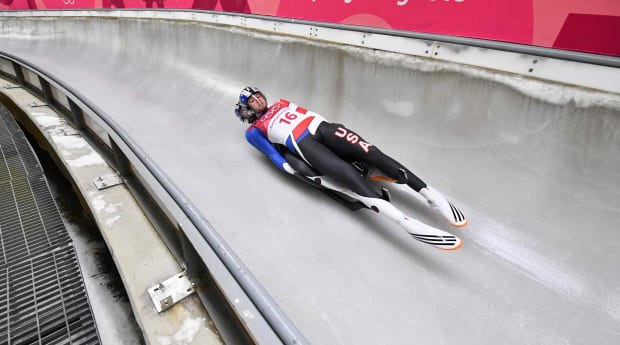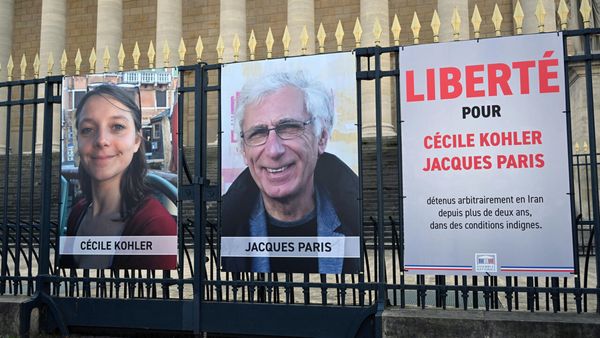BEIJING — You’ll have to forgive Jonny Gustafson if he hugged his sled tightly upon arrival here last week. The last time he flew through the Beijing airport, authorities seized 33 equipment boxes from lugers in several different countries—including the box that contained Gustafson’s sled.
He can laugh about it now. “It’s been an experience, for sure,” he says. But in late November, staring down the possibility of trying to qualify for the Olympics without his equipment, Gustafson tried not to panic.
After the first World Cup of the season, at the Olympic track in Yanqing, lugers began to hear rumors in the airport that not all their luggage had made it onto the plane that the International Luge Federation (FIL) had chartered to ferry them to events. Soon after they landed in Sochi, Russia, Gustafson learned that his sled wouldn’t be joining him. Neither would anything else he kept with it—uniforms, coaches’ equipment, tools, spare parts, “anything else we can fit in there,” he said.
He tried to get answers from FIL. “That didn’t go very far,” he says with a chuckle. As it turned out, FIL was trying to get answers from the Chinese, both on behalf of the athletes and on behalf of the organization: Among the seized boxes was one containing a random number generator, which FIL uses to determine which athletes get selected for inspection checks.

Andrew Nelles/USA TODAY Sports
“We for a long time didn't actually know why these boxes were classified as boxes with prohibited items,” said FIL president Christoph Schweiger. Eventually Chinese officials sent them photos of products such as acetone, which are not allowed in checked bags in large quantities. But, he added, authorities also identified items such as massage oil, which is allowed, and tools with their batteries removed, which is the proper procedure for storing them.
“Nobody could really explain to us why these boxes were kept in Beijing,” he said. He called the incident a “disaster.”
In the meantime, the affected athletes were scrambling to cobble together replacement gear. U.S. assistant coach Ľubomír Mick reached out to a coach on the Russian team, who—12 hours before the competition was scheduled to begin—lent Gustafson a sled. It was too big for him, but “I wasn’t gonna nitpick,” he says. He borrowed the rest of the equipment from fellow Americans: a helmet from Sean Hollander, a suit from Tucker West, neck straps from Brittney Arndt, booties and spiked gloves from others. They all raced at different times, so they could hand the gear back and forth, but the overlap meant he could not practice with his teammates. Instead, he joined the Russians; they joked that he was becoming a member of their team.
Two weeks later, when the sleds were still not back with their sliders and the World Cup circuit moved to Germany, Gustafson had to borrow a German sled. That one was too small, making him something of a red-bearded Goldilocks. And he was one of the lucky ones: Australia’s Alexander Ferlazzo, among others, could not race at all.
(China released the equipment after a few days, but the boxes are large—approximately five feet by two feet by two feet—and there are very few flights from Beijing to Central Europe at the moment, so it took the FIL a while to find cargo space to get them out.)
The fallout was chaotic enough that the FIL changed its Olympic qualifying procedure: Instead of counting the first seven World Cup events toward Beijing qualification, teams were allowed to drop their worst three results.
For Gustafson, who will compete on Saturday and Sunday evening here, that did not actually include his races on borrowed equipment. He finished 24th, 14th, 19th and 21st on ill-fitting sleds; on his own ride in the other three qualifiers he placed 25th, 21st and 28th. Some gear, such as radios, was detained until January.
“It's kind of a neat experience to say, hey, I had to compete at these three World Cups with totally new equipment from different countries with five runs before I'm racing each week,” he says. “Definitely stressful, but it's kind of cool that it at least worked out somewhat, and I have that experience under my belt. Now [I can tell myself] that, OK, it doesn't really matter what I'm sliding on. I can make it work.”
The athletes got their equipment back, and because of the policy change, Schweiger says the chaos did not affect anyone’s Olympics hopes. But no one ever got answers. Schweiger theorizes that perhaps Chinese officials could not read the labels on some of the items in the luggage and so they automatically categorized them as prohibited. He stresses that there were indeed some prohibited items in the seized boxes. But usually, he says, customs officials just throw away those products and send the boxes through.
“We have been organizing luge World Cup races all over the world—world championships, continental championships—since 1977,” he says. “That never happened before.”
All the equipment got into China for the Olympics. Now it just has to get back out.







